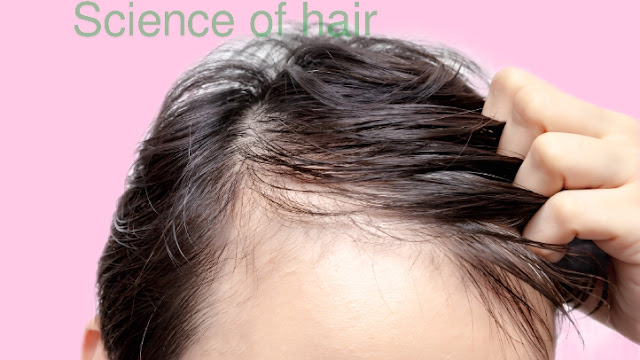Thinning Hair: Causes, Treatments, and Hairstyles to Minimize Appearance
Causes of Thinning Hair:
Genetics: Hair loss that runs in families, often called androgenetic alopecia, is the most common reason why people's hair gets thinner. This can happen to both men and women. In men, it usually causes a receding hairline and baldness on the top of the head, while in women, it generally leads to overall thinning hair.
Age: As we age, hair growth naturally slows down, leading to thinning and a decrease in hair volume.
Basharat
Hormonal changes: Fluctuations in hormones, such as during pregnancy, menopause, or thyroid imbalances, can contribute to temporary or permanent hair loss.
Medical conditions: Certain medical conditions, like alopecia areata (an autoimmune disease), scalp infections, and trichotillomania (hair-pulling disorder), can also cause hair loss.
Nutritional deficiencies: Deficiencies in iron, vitamin D, protein, and other essential nutrients can impact hair growth and lead to thinning.
Stress: Experiencing chronic stress can trigger hair loss, particularly telogen effluvium, which causes hair to enter the resting phase prematurely and fall out.
Hair styling practices: Tight hairstyles, such as braids, ponytails, and cornrows, can put tension on hair follicles and lead to traction alopecia. Additionally, excessive heat styling and chemical treatments can damage hair, causing breakage and thinning.
Treatments for Thinning Hair:
Medications: Minoxidil (Rogaine) and finasteride (Propecia) are two medications approved by the FDA to treat hair loss. Minoxidil is a topical solution that stimulates hair growth, while finasteride is an oral medication that works by blocking the conversion of testosterone to DHT, a hormone that contributes to hair loss.
Hair transplantation: This surgical procedure involves transplanting hair follicles from a donor area (usually the back of the scalp) to the thinning areas. While effective, hair transplantation is a costly and invasive procedure.
Low-level laser therapy (LLLT): This treatment uses low-level lasers to stimulate hair follicles and promote hair growth. LLLT devices are available for home use or professional treatment at clinics.
Platelet-rich plasma (PRP) therapy: PRP injections involve injecting a concentrated solution of platelets from your own blood into the scalp to stimulate hair growth.
Scalp massage: While the evidence is limited, some studies suggest that scalp massage may improve hair growth by increasing blood circulation to the scalp.
Hairstyles to Minimize the Appearance of Thinning Hair:
Short haircuts: Short hairstyles like pixies, bobs, and shags can make thin hair look thicker and fuller. Adding layers to these short cuts helps create texture and makes it easier to hide areas where your hair is thinning. This is because short hair has less weight, making it stand up more and appear thicker. Layers also add movement and dimension, which further disguises thinning.
In simpler terms, cutting your hair short and adding layers gives the illusion of thicker, fuller hair, especially if you're experiencing thinning.
Hair toppers and extensions: These hairpieces can add volume and length to thinning hair, providing a more natural and fuller appearance.
Headbands, scarves, and hats: These accessories can be stylish and practical ways to camouflage thinning hair while adding a personal touch to your look.
Additional Tips for Managing Thinning Hair:
Eat a healthy diet: Ensure your diet is rich in essential nutrients for hair growth, including protein, iron, vitamin D, and omega-3 fatty acids.
Manage stress: Find healthy ways to cope with stress, such as yoga, meditation, or exercise.
Be gentle with your hair: Avoid harsh styling practices, such as tight hairstyles, excessive heat styling, and chemical treatments.
Protect your hair from the sun: Use sunscreen or a hat to protect your hair from damaging UV rays.
Talk to your doctor: If you are concerned about thinning hair, consult your doctor to rule out any underlying medical conditions and discuss treatment options.
Remember, thinning hair can be a complex issue, and the best approach depends on the underlying cause. By understanding the potential factors contributing to your hair loss, exploring available treatment options, and adopting healthy hair care practices, you can effectively manage thinning hair and achieve a more confident and positive outlook.
Reduce hairloss by following these tips
Understanding Male Hair Loss: Causes and Effective Treatments







0 Comments